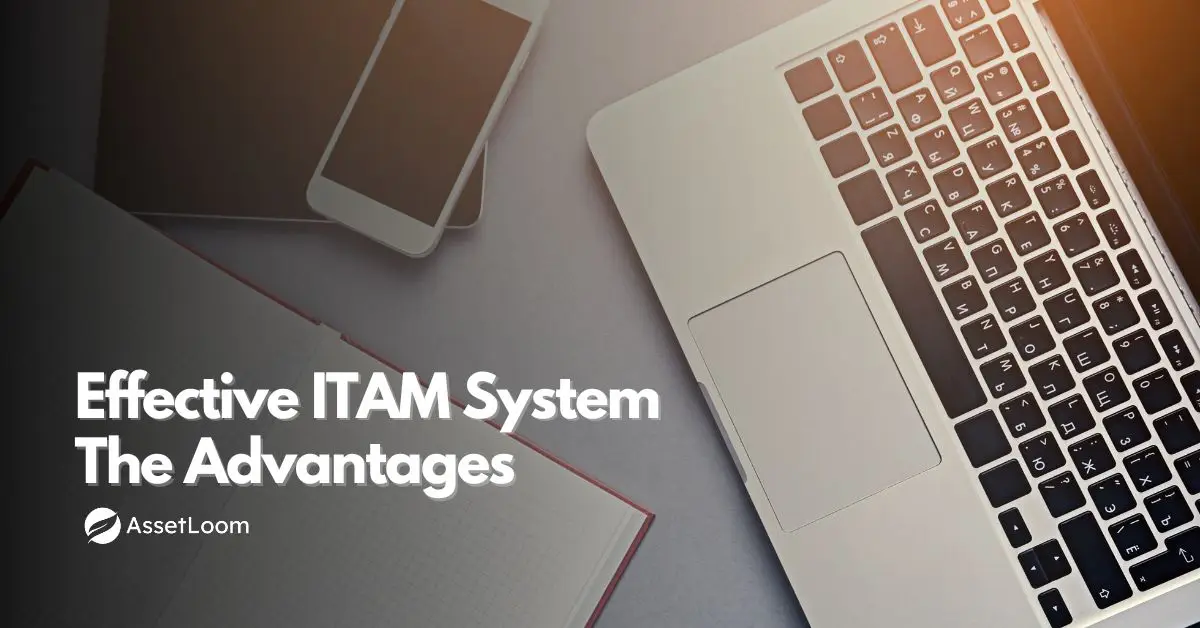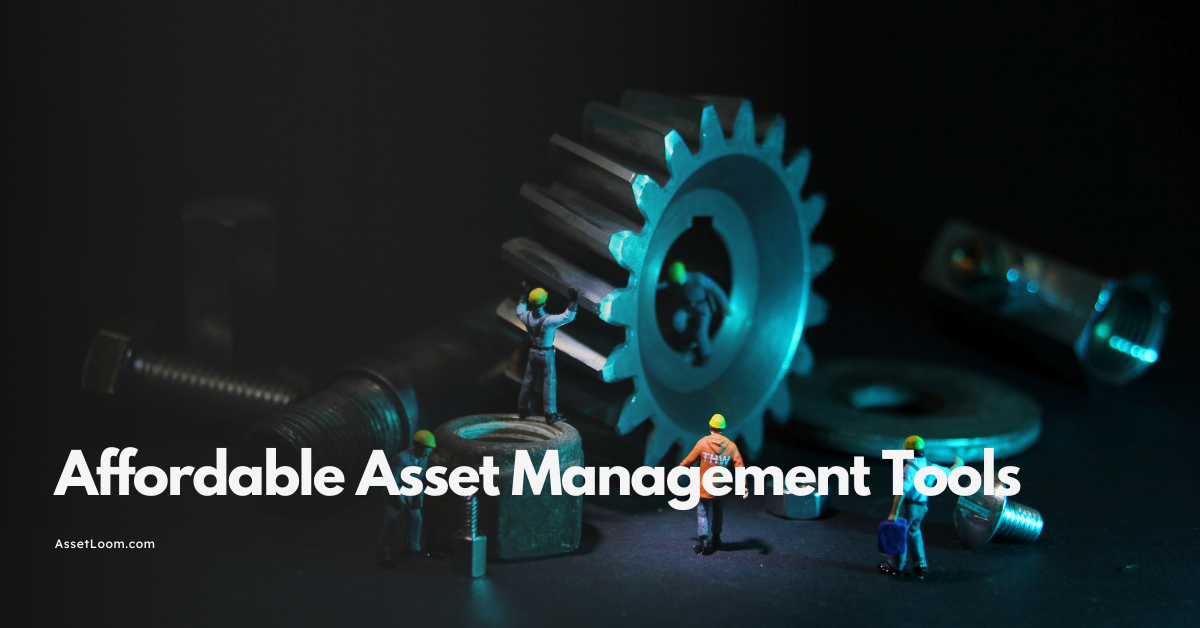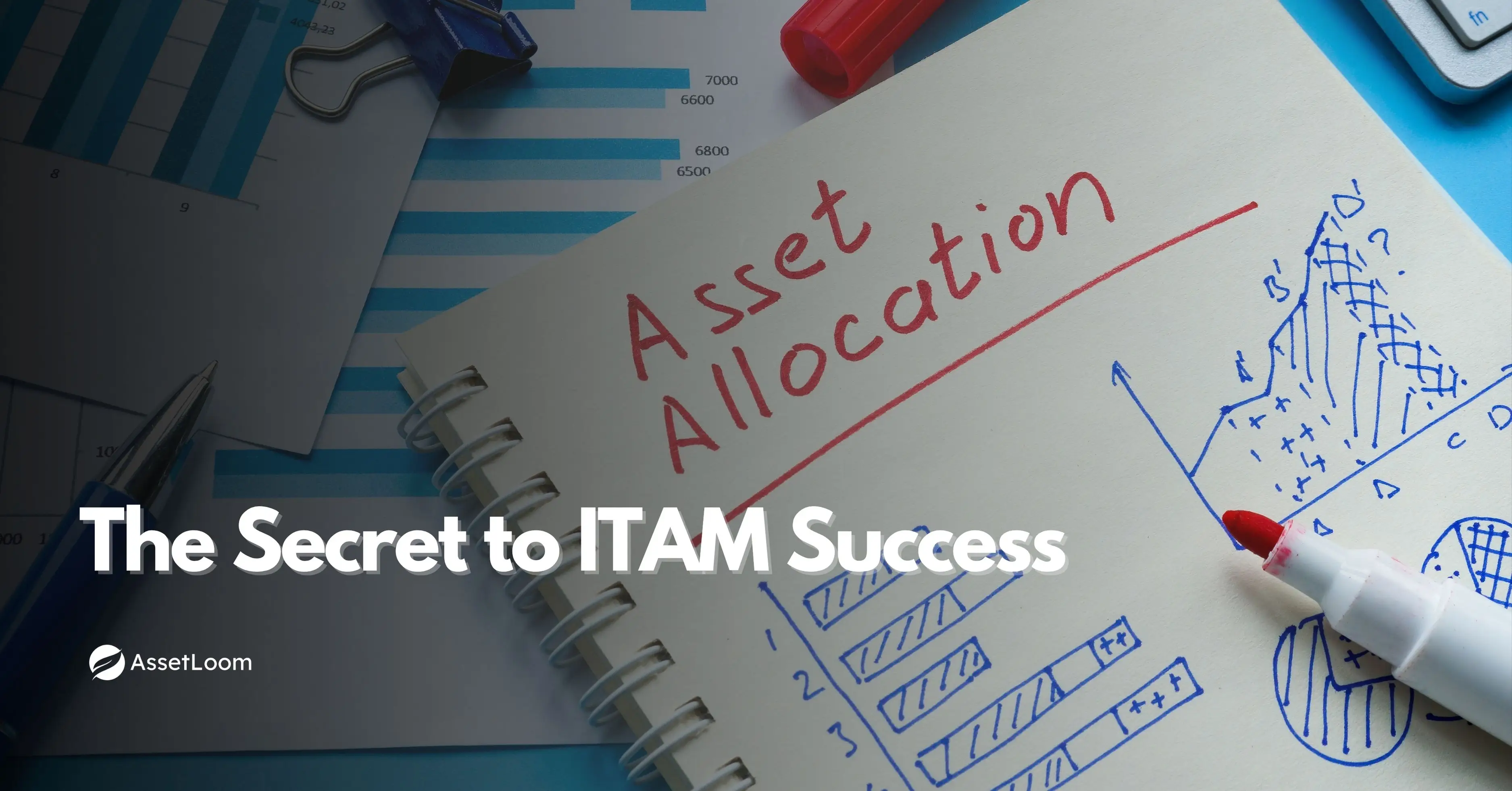Free IT Asset Management Software: Is It Worth Saving?
Is free IT asset management software worth it in 2025? Explore the benefits vs. risks. Decide what’s best for your business.
In 2025, most businesses are looking for ways to run their IT operations more efficiently while keeping expenses under control. Free IT asset management software offers a tempting option: a way to monitor devices, track software licenses, and organize resources without paying for expensive tools.
But is “free” always a smart choice? Can these tools truly deliver the reliability, security, and scalability a modern business requires? Or are they a risky shortcut that could cost more in the long run?
Let’s take a closer look at the benefits and limitations of free IT asset management software, and when it might be the right fit (or not) for your organization.
What Does Free IT Asset Management Software Actually Do?
Free IT asset management software helps organizations keep track of physical and digital assets. That includes things like laptops, desktops, printers, and software licenses. In simple terms, it provides a clear view of what assets you have, who’s using them, and how they’re performing.
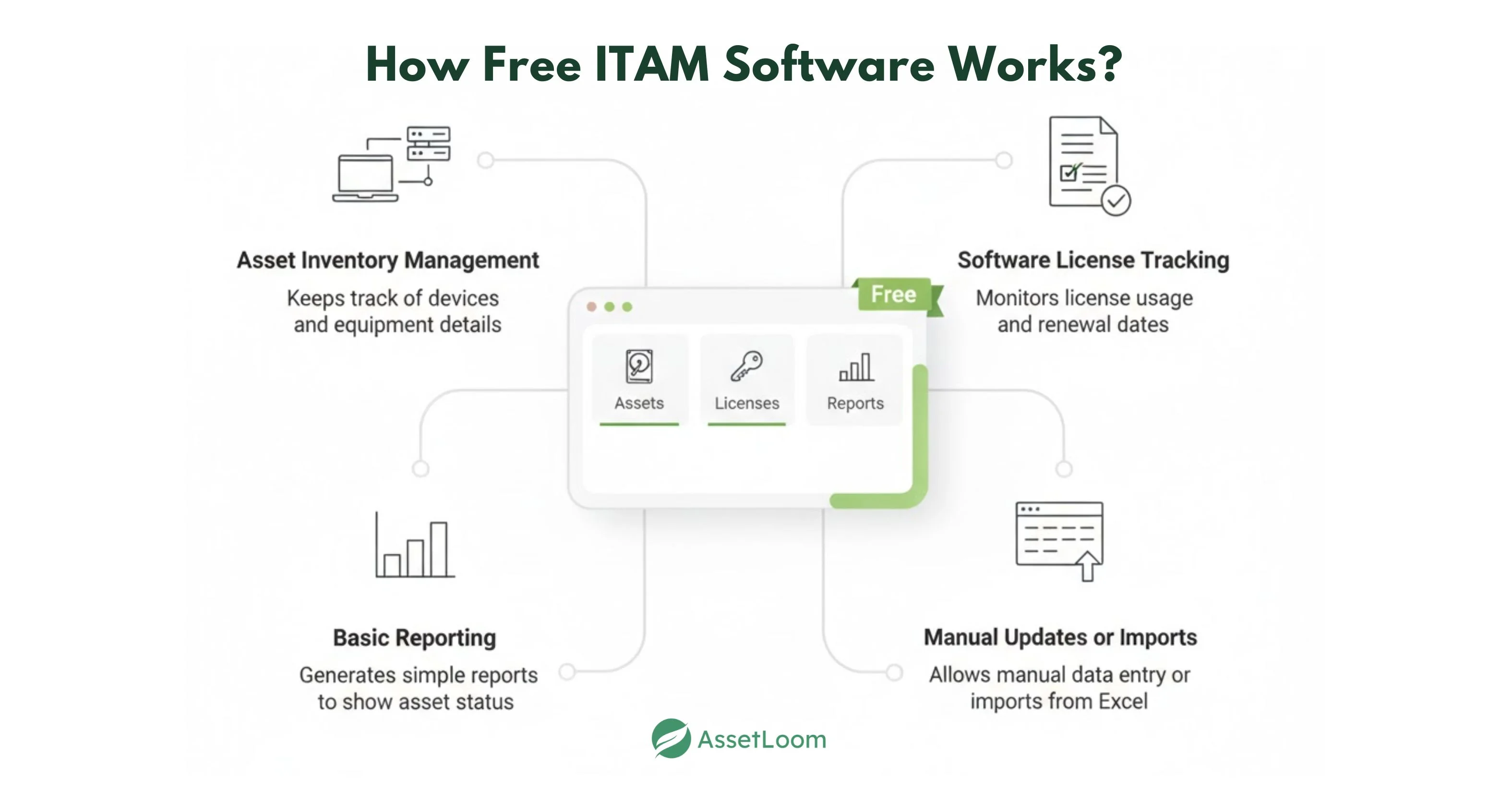
At its core, free ITAM software works like a centralized inventory system for both hardware and software. Most free tools include a few key functions that cover the essentials of asset tracking:
- Asset inventory management – Record and organize all your devices, including details like serial numbers, purchase dates, and assigned users.
- Software license tracking – Monitor license usage, renewal dates, and assignments to prevent compliance issues or unnecessary costs.
- Basic reporting – Generate simple summaries or exports to understand asset usage and status at a glance.
- Manual updates or imports – Add or update asset information manually, or import data from spreadsheets to save time.
Some software for IT asset management is open-source, while others are ad-supported or offer limited versions of paid products. They don’t charge upfront, which can seem like a great deal, especially for small companies. However, the real value depends on your team’s needs and what kind of support you’ll require in the future.
When Free IT Asset Management Software Can Work in Your Favor
There’s no denying the appeal of free software, especially for organizations that are just getting started or working with limited budgets. Here are a few reasons businesses choose it:
1. When You Need to Save on Costs
The biggest reason businesses choose free IT asset management software is cost savings. For startups, small companies, or nonprofit organizations, every dollar matters — and avoiding subscription fees can make a noticeable difference.
Using a free tool allows you to start managing your IT assets without committing to a large upfront investment. Instead of spending money on licenses or monthly payments, you can allocate that budget to more urgent needs like equipment upgrades, cybersecurity measures, or expanding your team.
It’s also a good way to test how asset management fits into your daily operations before deciding to invest in a paid platform. This approach lets you understand your organization’s actual needs while minimizing financial risk.
In short, free ITAM software can be a cost-effective starting point for businesses that want to stay organized but need to keep expenses low.
2. When Your Needs Are Simple
Free IT asset management software often works well for teams with straightforward requirements. If your main goal is to keep track of who’s using which device, where assets are located, or when licenses are due for renewal, most free tools can handle that without issue.
These platforms usually include the essential features you need for day-to-day tracking — such as maintaining an inventory list, assigning assets to users, and generating simple reports. For many small organizations, that level of functionality is enough to stay organized and maintain accountability.
You also avoid paying for complex features like automation, integrations, or advanced analytics that you may not need yet. This makes free software a practical option for small IT environments that only require the basics to stay in control of their assets.
3. When You Have Some Technical Experience
Free IT asset management software often requires a bit of technical know-how to set up and maintain. Many of these tools, especially open-source options, need users to handle installation, updates, backups, and basic troubleshooting.
If your team has some IT experience or a dedicated technical person, this won’t be a major challenge. You’ll have the flexibility to customize the system, integrate it with other internal tools, and manage it on your own terms.
Another advantage is community support. Many open-source ITAM solutions have active user communities where people share advice, extensions, and configuration tips. With a little effort, you can find solutions to most issues without paying for official support.
However, it’s worth noting that this approach works best for teams comfortable with a hands-on setup. If your organization prefers a plug-and-play system with guaranteed support, a free tool might eventually feel limiting.
4. When You’re Testing or Experimenting
Free IT asset management software can be a great way to explore asset tracking before making a financial commitment. If your organization is just starting to build an IT management process, these tools allow you to test how asset tracking fits into your workflows and identify which features are most useful.
This trial-and-error approach helps you understand what your team truly needs — for example, whether you require detailed reporting, automation, or integration with other systems. Once you’ve identified those needs, you’ll be better prepared to choose the right paid solution later on.
Free tools also give you the opportunity to train your team and establish internal processes for managing assets, all without spending money upfront. By the time you’re ready to scale or upgrade, you’ll already have a clear foundation in place.
Why Free IT Asset Management Software Isn’t Always the Best Fit
While the no-cost option sounds attractive, it often comes with limitations that can create more work, or even risk, later on. Here are some of the challenges to watch for:
1. Limited Advanced Features
Most free versions only cover the basics — things like asset lists, license tracking, and manual updates. However, as your organization expands, you may need more advanced capabilities such as automated alerts, real-time dashboards, or integration with HR and finance systems.
Without these features, teams often end up doing more manual work, which increases the chance of errors and makes reporting less efficient. Over time, the lack of automation can slow down operations and reduce visibility across departments.
2. Limited or No Support
Free tools rarely come with dedicated customer support. If something breaks or you encounter a bug during an important audit, your options may be limited to online forums or community discussions.
This can lead to unnecessary downtime or delays — especially in environments where quick issue resolution is critical. For example, a retail company might face compliance problems if its ITAM tool stops syncing data and no official support is available to fix it promptly.
3. Security Responsibilities
With open-source or self-hosted tools, security management often falls entirely on your team. You’ll need to handle updates, patch vulnerabilities, and monitor for threats yourself. If these responsibilities are overlooked, the software could become outdated or expose your business to potential data breaches.
For organizations that manage sensitive information, this can create compliance risks and undermine data protection policies.
4. Hidden Cost
Even if the software is free, running it isn’t. You’ll need server space, regular updates, and time from your IT team. Self-hosted tool like Snipe-IT requires server infrastructure, maintenance, and IT expertise, which can add up. Even ad-supported tools like Spiceworks may push premium upgrades to unlock essential features.
5. Performance Limitations
Free ITAM platforms usually work well for small databases, but they can struggle with performance as your asset list grows. Slow load times or system errors can become common once you start tracking hundreds or thousands of assets.
Eventually, you may outgrow the free system entirely and need to migrate to a more powerful platform — a process that can be time-consuming and costly if data isn’t properly structured.
When Free IT Asset Management Software Makes Sense
There are situations where free tools can be a good fit. You might consider using one if:
- You’re a small business or nonprofit with a manageable number of devices (under 50)
- Your team has the technical skills to install, configure, and maintain the tool You’re in the early stages of building your IT process and want to test a system before committing to a paid version
When to Look Elsewhere
Free IT asset management software isn’t ideal in every case. You may want to avoid them if:
- You’re managing a large number of assets or multiple office locations
- You work in a regulated industry where compliance and data protection are top priorities Your team doesn’t have the time or skills to manage software updates, servers, or security
Free vs. Paid ITAM Comparison:
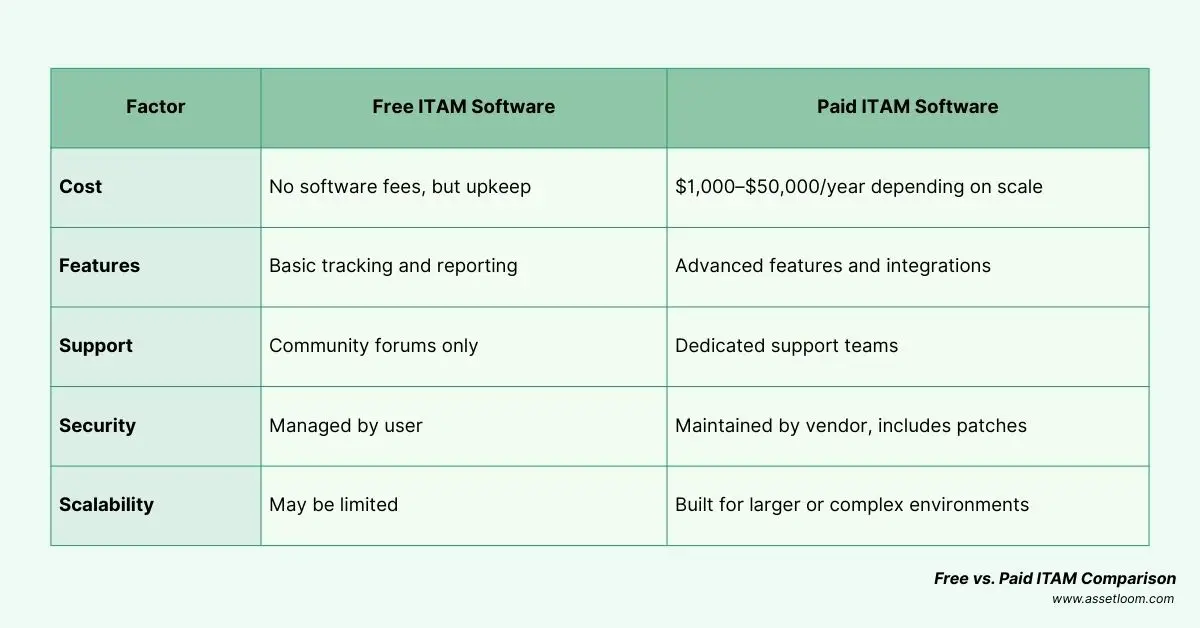
Bottom Line: Free tools can work well for small teams with basic needs, but they may not be enough for larger or more complex setups.
How to Get the Most from Free IT Asset Management Tools
If you choose a free option, here are some ways to reduce the risks and get more value:
- Know what you need. Decide whether basic tracking is enough or if you’ll need features like depreciation or reporting integration. Focus on security. Pick tools that are regularly updated and follow best practices for securing self-hosted software.
- Use community support. Join forums and groups where users share plugins, updates, and troubleshooting tips. Test at a small scale. Start by tracking a few assets to make sure the tool works well before expanding.
- Plan for real costs. Include hosting, maintenance, and IT time in your budgeting, even if the software itself is free.
- Start with a trial when possible. Some ITAM platforms, like AssetLoom, offer free trials of their full solution. This allows you to test enterprise-level features before deciding whether to invest in a paid plan.

AssetLoom Free — But Smarter
Not all “free” software is built the same way. While many free IT asset management tools stop at the basics, AssetLoom takes a different approach. It’s designed to give businesses a true starting point for managing assets efficiently — without sacrificing usability, security, or room to grow.
With AssetLoom’s free plan, you get more than just a trial or limited version. You gain access to essential ITAM capabilities that are built for real-world use, such as:
- Comprehensive asset tracking – Monitor both hardware and software from a single dashboard.
- License and warranty management – Keep an eye on renewals and expiration dates with automated reminders.
- Cloud-based access – Manage your assets anytime, anywhere, without the hassle of hosting or maintaining your own server.
- Data accuracy tools – Avoid duplicate entries and maintain consistent, reliable records across departments.
- Upgrade flexibility – When your needs grow, you can easily expand into advanced analytics, integrations, and lifecycle management — all within the same platform.
Unlike most free tools that rely on manual work or self-maintenance, AssetLoom offers an accessible, scalable foundation for businesses that want to take asset management seriously from the start.
It’s free to start, but built to grow with you — helping teams move from basic visibility to complete control over their IT assets.
Final Thoughts
Free IT asset management software can be a practical option for the right kind of organization, especially those just starting out or trying to manage a small number of devices. With a bit of technical skill, you can get value from a free tool without committing to a paid platform right away.
But it’s important to weigh the long-term needs of your business. Free tools may lack the features, support, and security that larger or regulated organizations rely on. Before making a decision, take time to understand what your team really needs and what resources you have to manage the software yourself.

Subscribe for Expert Tips and Updates
Receive the latest news from AssetLoom, right in your inbox.
